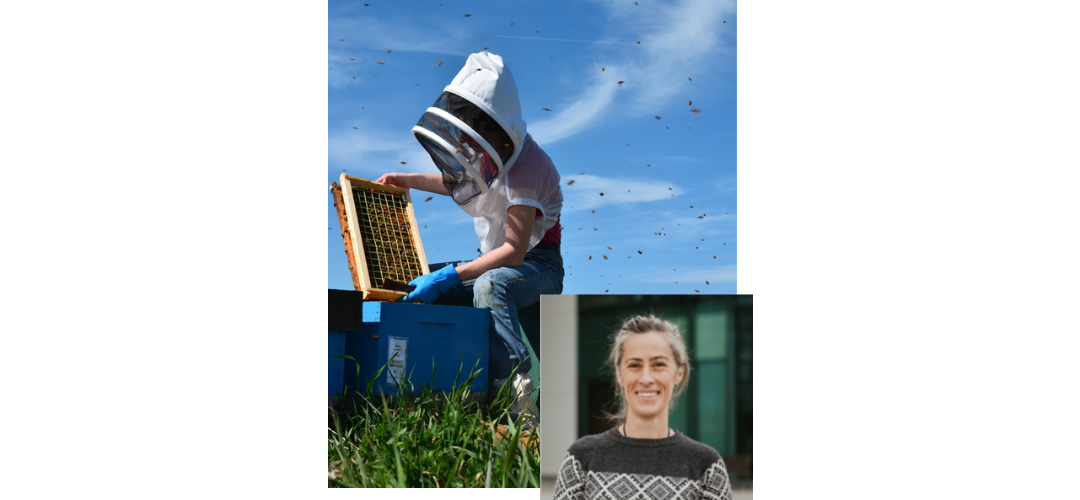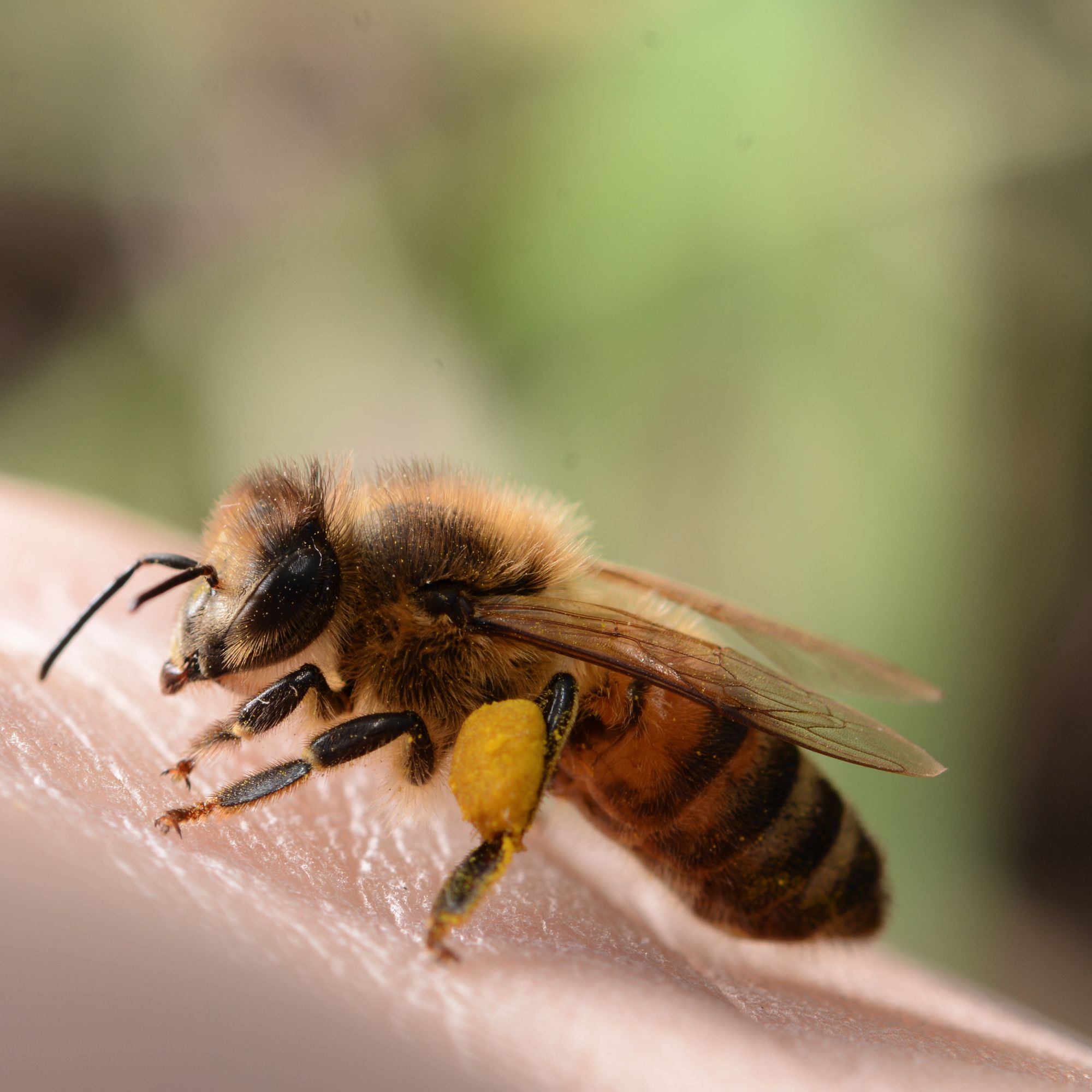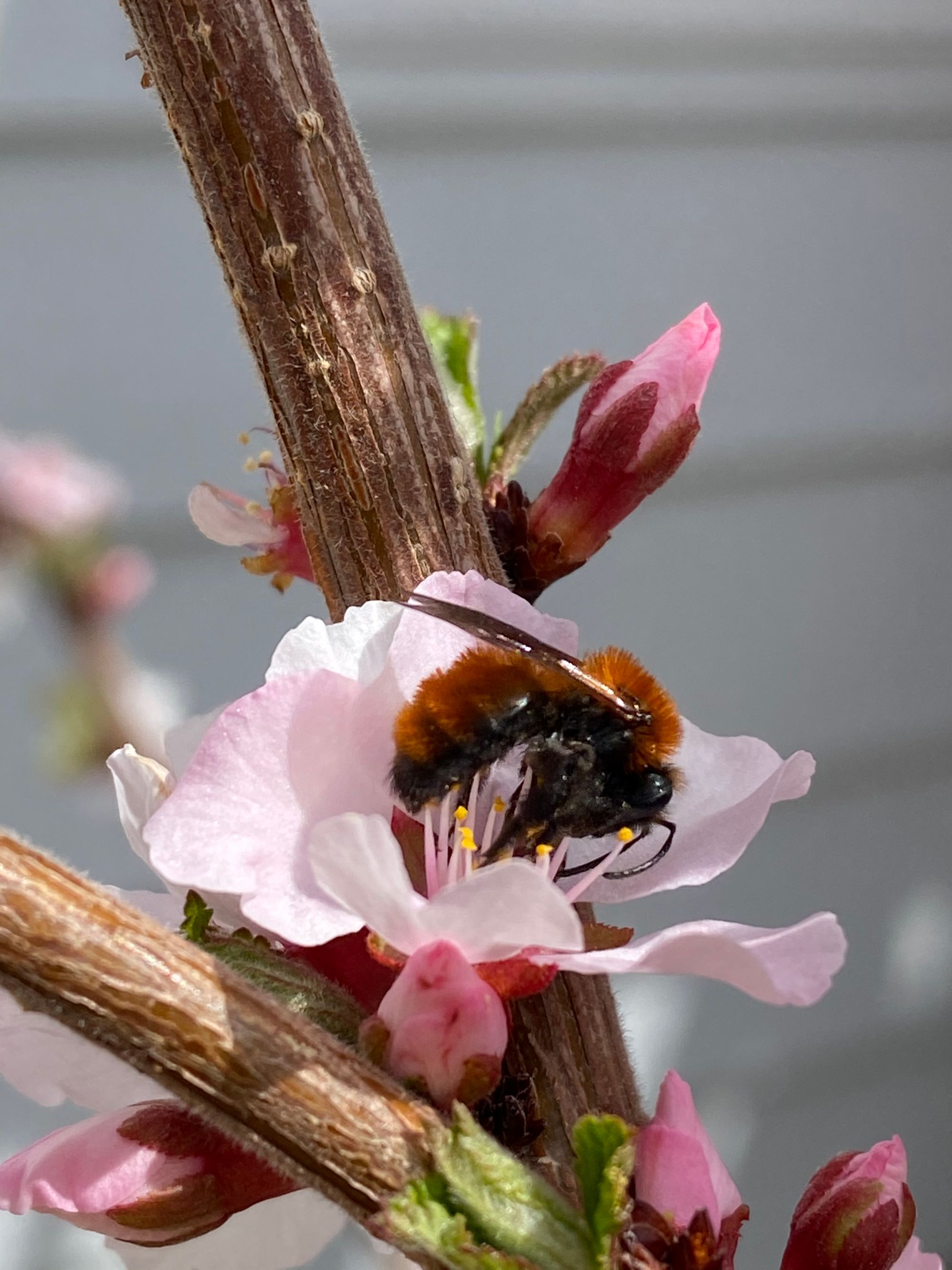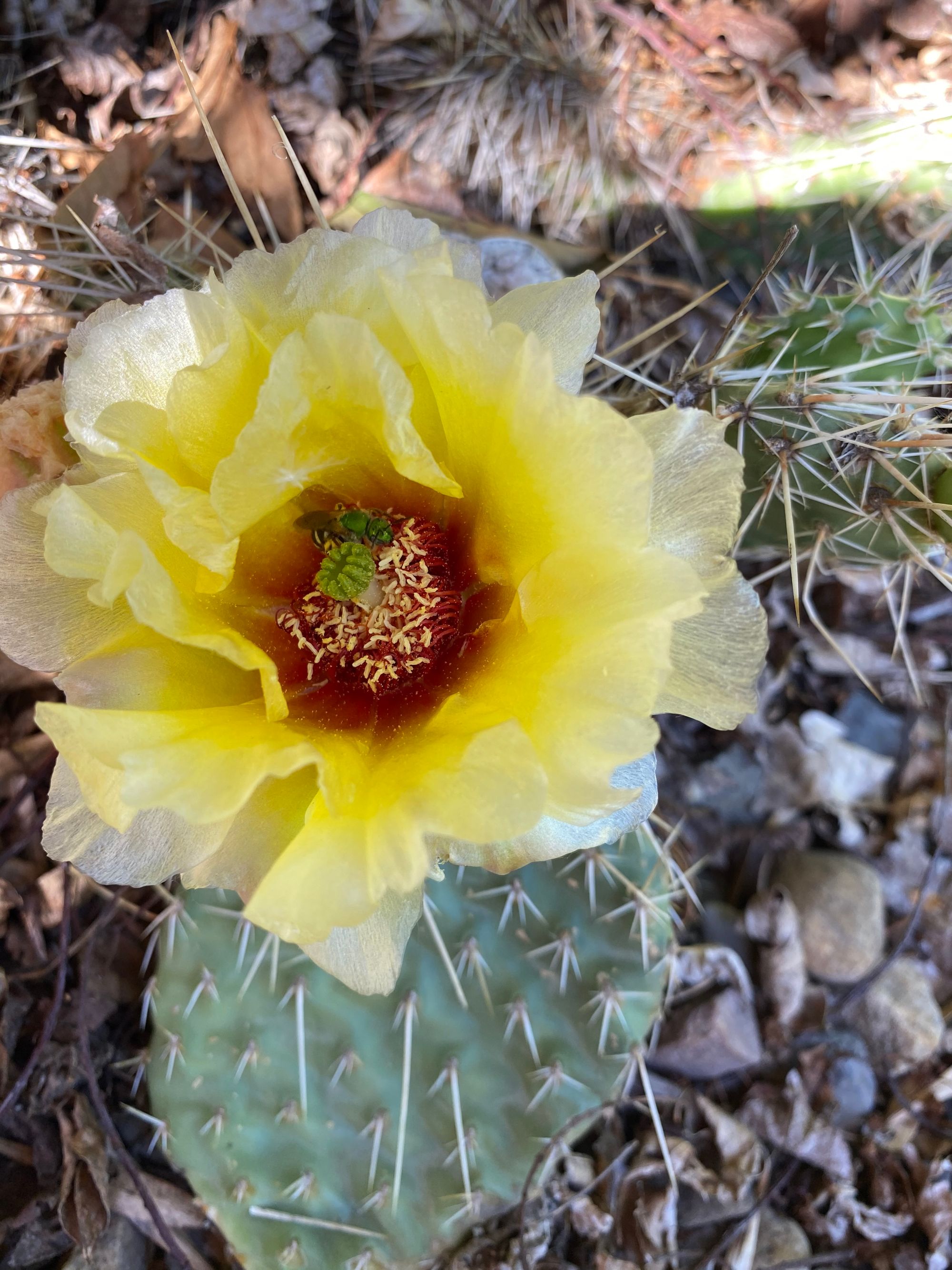Pictured above is a mid-flight bumble bee.
Did you know: while honey bees were introduced to Canada from Europe, we have over 300 species of native bee in Alberta. They come in many beautiful shapes, sizes and colours - including metallic green! This science fact is brought you to by Dr. Shelley Hoover, a research associate here at the University of Lethbridge who specializes in all things bees.
If this has whet your appetite for more bee facts, make sure to follow the Instagram run by Dr. Hoover, @uleth_bees. The next Agri-food Summer Speaker Series talk will also be focused on pollinators - and Dr. Hoover will be on the panel. As always, these events are free but registration is required to attend.

Hello Shelley! You are new to the uLethbridge scene, so why don’t you share your research interests with us?
I always have a lot going on. In general, we work on questions that involve managed bees (honey, bumble, and leafcutter bees) and crop pollination. We have worked on everything from genomics, physiology, and behaviour to the impacts environmental change. We most often work on projects involving honey bees, and have over 100 research colonies, including some right on campus.
Right now, we are working on the Bee CSI project which is a large collaborative endeavour with colleagues across Canada. We are working to find molecular markers for causes of honey bee stress and mortality. Our portion of the project examines honey bee nutrition and canola pollination.
We are also doing work to improve queen health and the sustainability of beekeeping, including methods of requeening honeybee colonies. Related to this is exploring overwintering queens en masse in colonies in indoor facilities. We want to evaluate their quality in the subsequent production season. We are also looking at relationships between health, behaviour, and fecundity (aka the natural ability of a queen to produce offspring). Much of this work is done in collaboration with the Alberta Beekeepers Commission and individual beekeepers.
A couple of other inquiries include things like resistance of Varroa destructor mites (a parasite of honeybees) to chemical treatments, honey bee nutrition, and developing a bloom calendar for our region. When you put it all together, this research is very holistic in nature – we're coming at bee health from as many angles as possible.




Bees are so vital that this definitely feels like the right way to do it.
That’s right – our research is directly connected to the very basis of life: food production and the structure of our ecosystems! Pollination is critical to food production and the reproduction of flowering plants, and so having healthy populations of native and managed pollinators is critical for both ecosystem health and agroeconomies. It is wonderful to work in a field that is both inherently fascinating, but also of interest and relevance to the general public and the agriculture industry.
It is also exciting to have the opportunities to work with a number of fantastic collaborators at the Alberta Beekeepers Commission Technology Transfer Program, Agriculture and Agri-Food Canada, the Universities of British Columbia, Alberta, Manitoba, Guelph, and Laval, and Oregon State University. Working with such a great community of people makes the work that much more fun.
Collaboration – we love to see it. Anyone else on your list of dream collaborators?
Honestly, I am still new to the University of Lethbridge so I am looking forward to getting to know my new colleagues in a post-pandemic environment!
Why did you choose to do research here, at uLethbridge?
I used to work for Alberta Agriculture and Forestry before they shuttered their research programs in 2020. Moving to the University of Lethbridge will give me the opportunity to grow what I started there, with the freedom to pursue new and interesting opportunities.
And, the final question we ask all our faculty, tell us one fun fact about you!
I live with quite a menagerie - including only the non-human vertebrates, my family has 10 pets!
